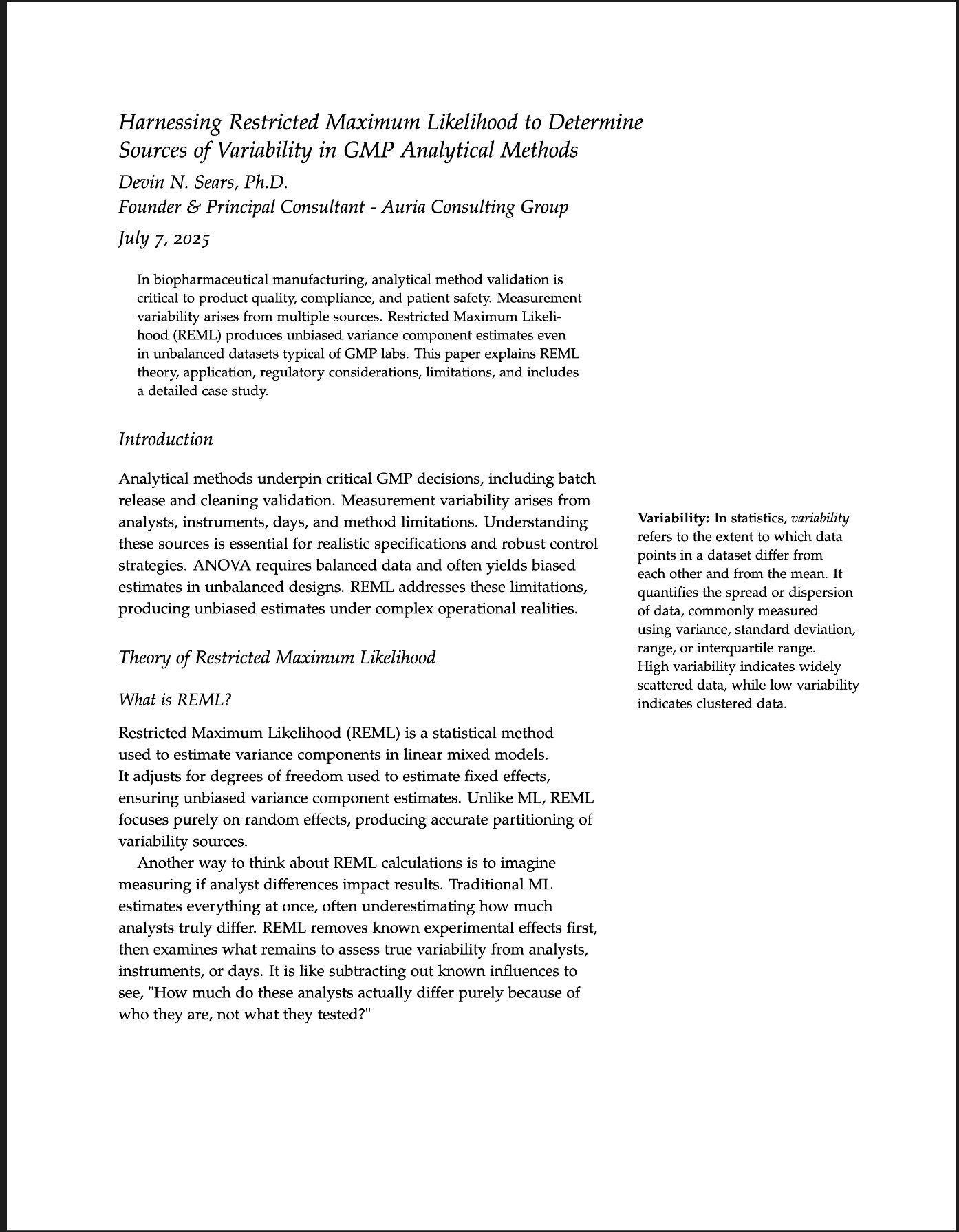 Image 1 of 1
Image 1 of 1


White Paper: Harnessing Restricted Maximum Likelihood to Determine Sources of Variability in GMP Analytical Method
This white paper explores Restricted Maximum Likelihood (REML) as a powerful statistical tool for estimating variance components in GMP analytical method validation. It explains how REML produces unbiased variance estimates, even with unbalanced datasets common in real-world labs, unlike traditional ANOVA or ML approaches. Through clear theory, practical software recommendations (SAS, R, JMP, Minitab), and a detailed cleaning validation case study, it demonstrates REML’s application to dissect variability from analysts, instruments, days, and residuals. Findings revealed residual variability as the dominant source, followed by day-to-day and analyst differences, guiding targeted SOP enhancements, retraining, and environmental monitoring. By quantifying true sources of variability, REML strengthens method robustness, ensures realistic specifications, and supports regulatory compliance under ICH Q2(R2) and USP <1225>. The paper concludes that REML is indispensable for pharmaceutical scientists aiming to drive data-driven improvements, robust quality assurance, and patient safety in analytical and cleaning validation programs.
This white paper explores Restricted Maximum Likelihood (REML) as a powerful statistical tool for estimating variance components in GMP analytical method validation. It explains how REML produces unbiased variance estimates, even with unbalanced datasets common in real-world labs, unlike traditional ANOVA or ML approaches. Through clear theory, practical software recommendations (SAS, R, JMP, Minitab), and a detailed cleaning validation case study, it demonstrates REML’s application to dissect variability from analysts, instruments, days, and residuals. Findings revealed residual variability as the dominant source, followed by day-to-day and analyst differences, guiding targeted SOP enhancements, retraining, and environmental monitoring. By quantifying true sources of variability, REML strengthens method robustness, ensures realistic specifications, and supports regulatory compliance under ICH Q2(R2) and USP <1225>. The paper concludes that REML is indispensable for pharmaceutical scientists aiming to drive data-driven improvements, robust quality assurance, and patient safety in analytical and cleaning validation programs.